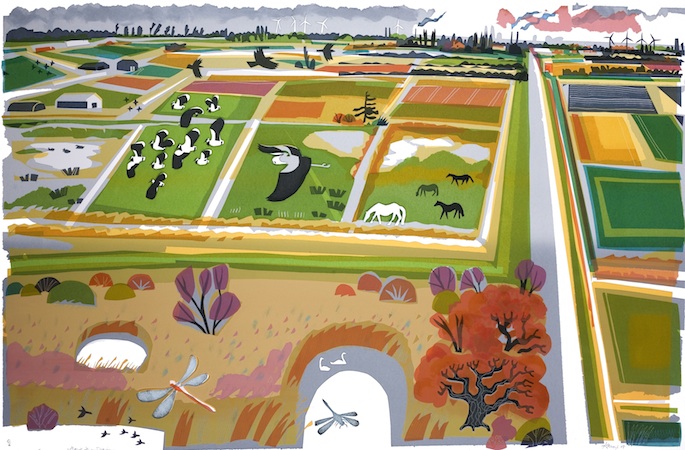When Queen Elizabeth II came to the Elan Valley in October 1952 to open the brand-new Claerwen Dam, she was a young woman of 26, only eight months into her reign. First published in: The Times Click here to view a map for this walk in a new window






















Facebook Link:
The enormous Claerwen Reservoir completed a hand of five here in the hilly heart of Wales – the others had been built when Elizabeth’s great-great-grandmother was still on the throne. Today the five resemble natural lakes. It seems as though they must always have been here, snaking their way gracefully at the feet of the hills.
Thick mist was settling in along the hilltops as we splashed across a succession of silvery cascades and took the stony hill track from Claerwen Reservoir up to the shallow pass at Cefn Llanerchi. The cool air gently stirred sedges and dried thistle heads. A stonechat with bold white eye-stripes and peach-pink throat perched at the uppermost point of a sprig of gorse and cried, ‘Wheesh-tsk-tsk!’ Moorland rills coursed down the wet peaty slopes in scribbles of silver.
Out in the squelchy grassland beyond the pass stood a stone row – two monoliths roughly shaped into slabs, two massive boulders alongside, and a standing stone five feet tall. Who thought it worthwhile to align them up here five or six thousand years ago, and why? There’s no knowing – but the view was beautiful, even under the mist, a keyhole glimpse of the screes, crags and high slopes cradling Garreg-ddu Reservoir.
Down through a sweet-smelling conifer plantation among rain-polished liverworts and mosses, with Caban-coch reservoir lying below, and then on along a bumpy and puddled old track beside the loudly rushing Afon Claerwen. Two red kites circled high over Rhiwnant Farm, where black cattle were enjoying their last graze of the year before the farmer put them under cover for the winter. A tough old ewe perched precariously on top of a stone wall, cropping whatever greenery she could find among the roots of a hazel hedge.
Big slugs crawled through the wet grass of the bog, making the most of the moist afternoon, their black bodies shining as though encased in PVC. Back at Claerwen Reservoir, we crossed the river and climbed up beside the great dark dam wall once more.
Start: Claerwen Dam upper car park, Elan Valley (OS ref SN 871636).
Getting there: Bus T57 (pre-book on 01597-810666), Rhayader to Elan Valley Visitor Centre
Road – A44/A470 to Rhayader; B4518 through Elan Village and on; in 1 mile, left across dam (‘Claerwen’); in 4 miles, fork right to upper car park.
Walk (9 miles, moderate, OS Explorer 200. NB: online map, more walks at christophersomerville.co.uk): Return down road. At fork, left. In 100m, left (877630, bridleway fingerpost); follow bridleway (occasional blue arrows/BA) up past masts (899636). Detour SE to stone row (905631); return to gate at corner of plantation (903635). Woodland track (occasional BA) descends for ⅓ mile to track crossing (908636). Right; follow track for 1½ miles, out of wood and down to road (904617). Right for 300m; left by phone box, over bridge. Right by barns (901615, bridleway fingerpost) along minor road. At Rhiwnant, right (895617, cycleway arrow) on stony lane. In 300m fork right and keep near river for 2 miles to Cerrigcwplau Farm by Claerwen Dam. Cross stream by footbridge (869633); cross river by road bridge. Though metal kissing gate opposite (870634); path up to upper car park.
Lunch: Picnic. Tea: Elan Valley Visitor Centre
Accommodation: Elan Valley Hotel, near Rhayader, LD6 5HN (01597-810448; elanvalleyhotel.co.uk) – very friendly; ace chef!
Information: Elan Valley Visitor Centre, LD6 5HP (01597-810898; elanvalley.org.uk) – ranger service, walks, etc.
www.ramblers.org.uk www.satmap.com www.LogMyTrip.co.uk visitwales.com











































































































































